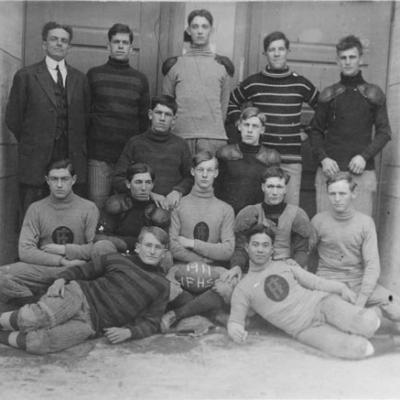Henry Y. Kasai Photograph Collection
Henry Kasai Photograph Collection
The Henry Y. Kasai photograph collection contains family photographs, and portraits of Henry Kasai at various public activities and events.
Biographical Note
Henry Yashihiko Kasai (1890-1966) was born 25 September 1890 at Kawaguchimura, Minamitsuru-gun, Yamamashi-ken, Japan. His father was Kisaku Kasai; his mother, Mura Kasai. He completed Koto Shogakho at Kawaguchimura in May 1904. At that time, two of his uncles, Araji Kasai and Hiroshi Kasai were in America. His father was to represent Kaiki (the silk industry) at the World Fair in St. Louis, Missouri, and Henry went with him.
Between 1904 and 1906 he attended grades one through four at Mountain View, California. He worked on a fruit farm for board and room. In September 1906 he went to Menan, Idaho, to join his father and uncle who were engaged in sugar beet farming. He attended the Menan Public School from 1906 to 1908 in order to learn the English language. During the summer he worked on his father's farm and also on the Oregon Short Line Railroad. In September 1909 he entered Idaho Falls High School, from which he graduated in June 1913, the first Japanese graduate of that school.
He worked on the farm in the summer. After school and on Saturdays he worked at Neuber and Scott Company, a retail store. He was active in sports, playing baseball and football. He was also interested in music and singing.
One of the few Issei bi-linguists at that time, Kasai was in constant demand as an interpreter with Americans, as well as acting as mediator in Japanese families, bridging the cultural gap between Issei parents and their American-born (or Nisei) offspring. He was beginning his lifelong pursuit of promoter of understanding between peoples.
He attended Gem State Business College at Idaho Falls, and was scheduled to enter Stanford University, but he was so successful at selling life insurance for the New York Life Insurance Company among the Japanese in Utah and Idaho that he decided to continue with the company. In 1916 he moved to Salt Lake City, where he joined the Chamber of Commerce and became active in community services.
His territory as a New York Life Insurance agent expanded to cover Nevada and Wyoming as well as Utah, Idaho, and California, and he attended conventions around the United States and Canada.
In 1924 he acted as interpreter when Archbishop Sonyu Otani of Honpa Hongwanji visited Utah. That same year he arranged for Dr. Muni, President of the First Foreign Language School of Tokyo, to speak in the Salt Lake Tabernacle.
In 1925 an alien land law was introduced in the Utah legislature. Kasai was active in "above board" opposition to it. In 1943, during World War II, the alien land law was passed. It was repealed in 1947.
During the Depression Kasai helped several Issei businessmen engaged in the cleaning and pressing business in Salt Lake City form a corporation called Eagle Laundry and aided in the purchase of a building with space for future expansion. At this time he was asked to give several speeches on Japanese culture in the United States and also on the Manchurian situation in 1931 and 1932. He was advisor to the International Club, an organization whose membership included immigrants of many nationalities. He initiated the formation of the Utah Chapter of the Japanese American Citizens League (JACL) with Tomatsu Murayama of Tokyo. He also helped organize the Ben Lomond chapter in Ogden and the Idaho Falls chapter. These three chapters formed the International District Council of JACL on 29 December 1939.
With the advent of World War II and the forced evacuation of all Japanese, including the Nisei and Sansei (third generation), from the Pacific coast, the JACL national headquarters was relocated to Salt Lake City. Kasai, who had married Alice Iwamoto in 1937, was arrested along with hundreds of other Japanese community leaders. After his release he continued to work toward strengthening inter-cultural relations. In 1945 he was honored as outstanding citizen of the year by the Salt Lake Junior Chamber of Commerce. Two years later he was honored with that organization's "Americanism Award," even though he was not a citizen of the United States. When, in 1948, the Federation of Women's Clubs instigated the International Peace Garden at Jordan Park, Kasai led the Japanese Garden Project. Through his efforts the Japanese Garden was the first to be built.
Kasai acquired United States citizenship in 1954. In 1960 he was elected president of the Salt Lake JACL, the only Issei so honored. A. Ray Olpin, president of the University of Utah, was the keynote speaker of the honoring program. He spoke in Japanese.
Kasai was instrumental in promoting Matsumoto City as the sister city of Salt Lake City. In his words, he "assumed the kind of services that Japanese Consul would be obligated to serve if we had a consular service here in Utah." He coordinated the visits of Japanese officials and students with city and state officials throughout his life. Henry Kasai died on 28 January 1966 at the age of seventy-five. Many tributes were made to him for his lifetime of furthering relations between people and cultures.








